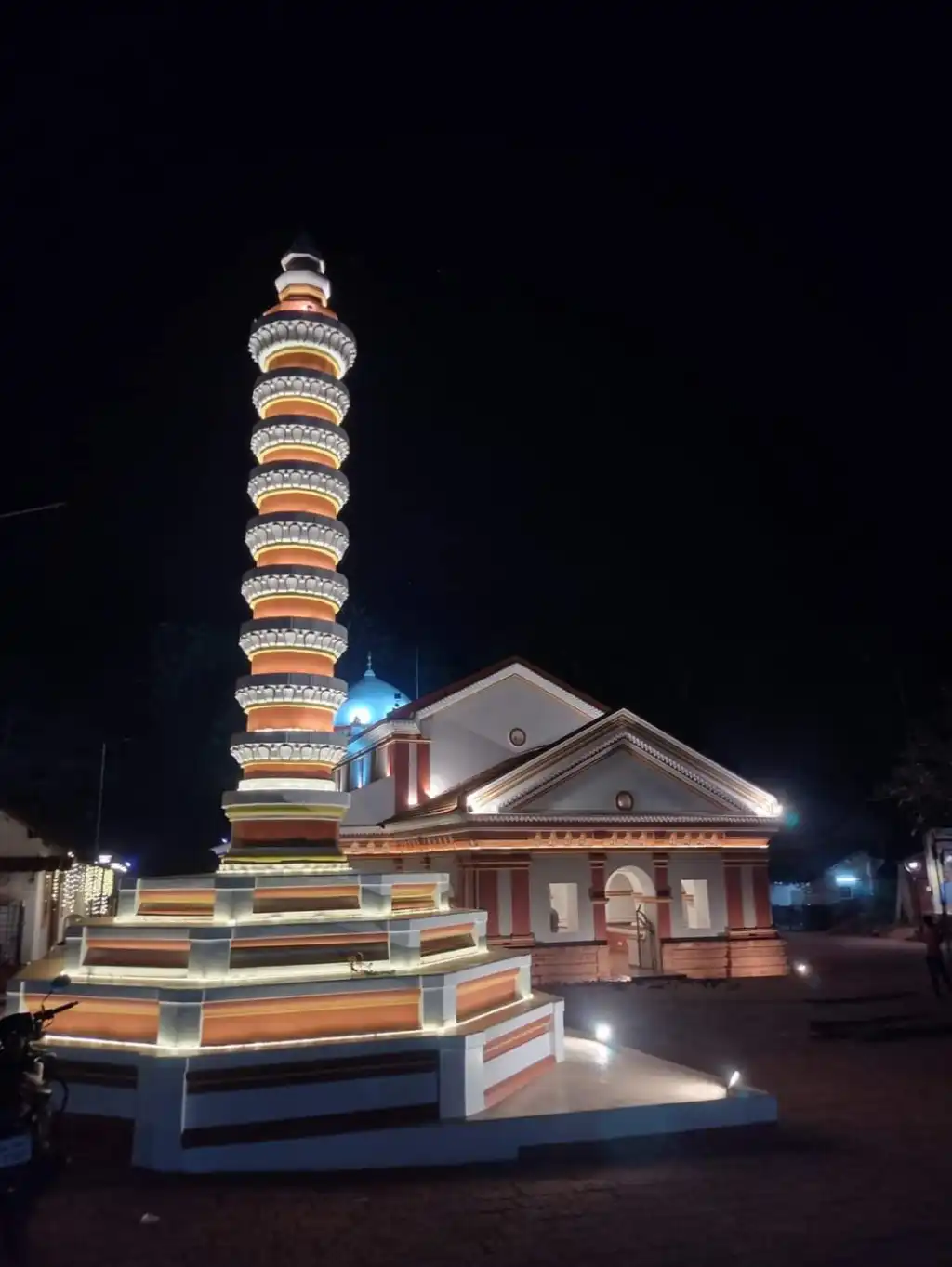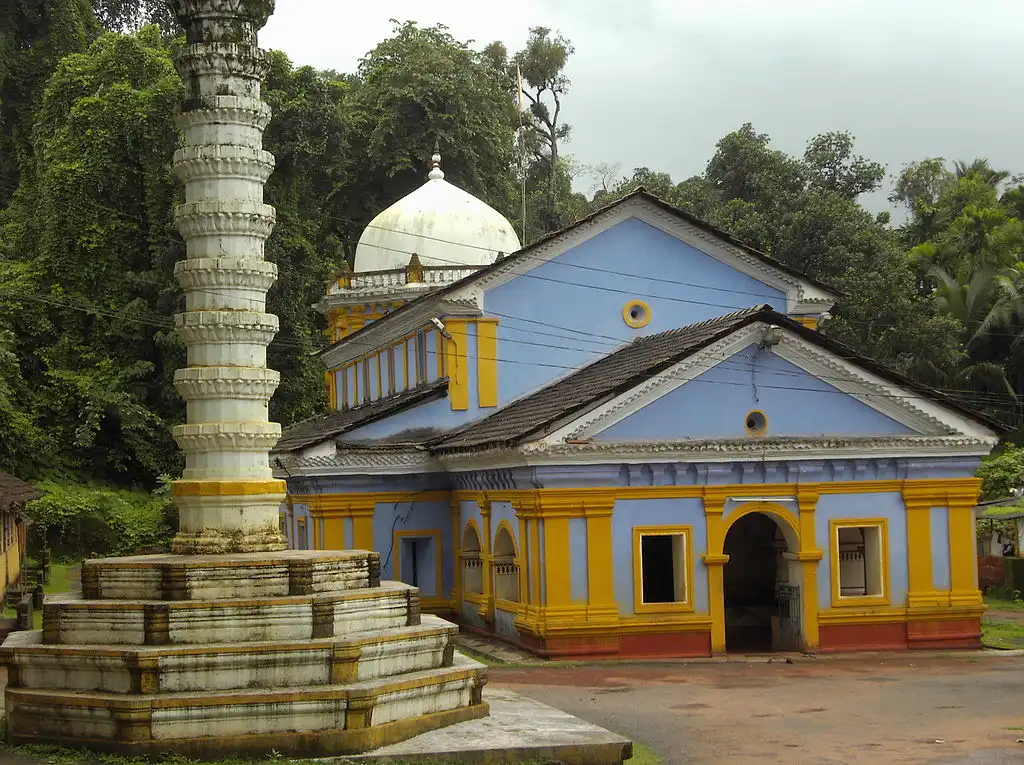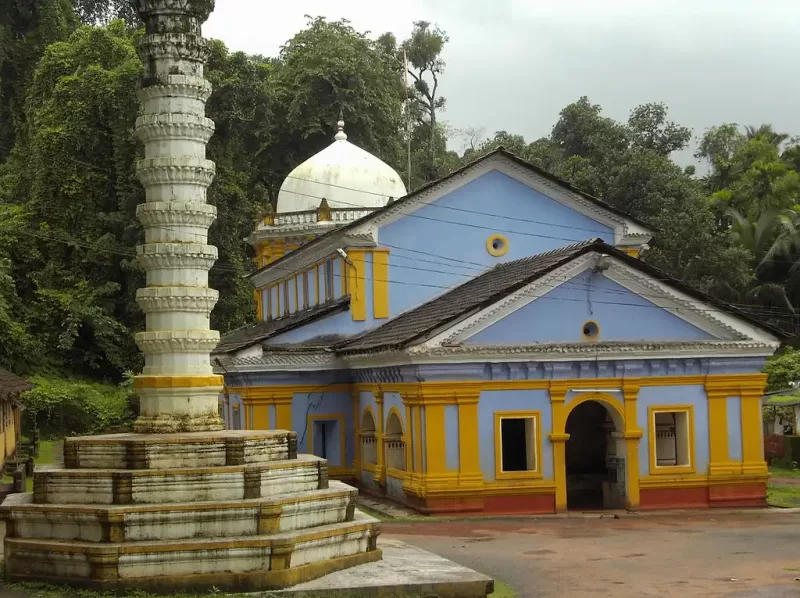Saptakoteshwar Temple: Goa’s Iconic Shiva Shrine Through the Ages
The Saptakoteshwar Temple in Narve, Goa, holds great historical significance, with roots dating back to ancient times. This temple has experienced the grandeur of the Kadamba and Vijayanagara dynasties and has also endured the challenges of the Islamic and Portuguese eras. It was later renovated by Chhatrapati Shivaji Maharaj, one of the greatest kings of Bharat.
The Saptakoteshwar Temple stands as one of the oldest and most revered sites in Goa.
It is listed as one of the ten significant locations in the Konkan region, as described in the Sangameshwar Kshetra Mahatmya.

According to legend, seven great rishis performed intense penance (tapasya) for seven crore years at the confluence of the Panchganga River and the sea to appease Lord Shiva.Impressed by their devotion, Lord Shiva granted them a boon. The rishis requested that he establish his abode at the site and remain there for seven crore (sapt koti) years. Consequently, the Shiva Lingam became known as Saptakoteshwar.
ALSO READ: Shiva Tandava: The Cosmic Dance of Destruction and Creation
Shri Krishna’s Devotion and the Legacy of the Kadamba Kings
According to folklore, when Shri Krishna had to flee Mathura due to Jarasandha’s repeated attacks, he prayed at the Saptakoteshwar Temple during the Dwapara Yuga. After worshiping Lord Shiva here, Shri Krishna is believed to have established his kingdom at Dwarka.
As mentioned in the Sahyadri Khand, the temple of Saptakoteshwar is located on the island of Deepvati.
The Kadamba kings of Goa were ardent devotees of Shri Saptakoteshwar and proudly referred to themselves as “श्री सप्तकोटीश्वरलब्धवरप्रसाद” (Shri Saptakotishwar Labdha Vara Prasad), meaning “those blessed by the grace of Shri Saptakoteshwar.”
The Struggles and Revival of the Saptakoteshwar Temple
In 1352, Gangu Bahmani, the Bahmani monarch, invaded Goa and defeated the Kadambas. During his reign, Goan Hindus faced systematic persecution and forced conversions. Among the many temples destroyed was the Shri Saptakoteshwar Temple. The Lingam from the temple was thrown into a field on the island of Deepvati, also known as Diwadi.
However, in 1391, with the rise of the Vijayanagara Empire, Madhav Mantri, a minister of Emperor Harihara II, restored the temple and reinstated its significance.
In 1510, the Portuguese defeated Adil Shah’s army and seized control of the islands of Goa and Divar, ending over a century of relative peace. They exhibited even greater religious zeal than their predecessors. And destroyed nearly all Hindu temples in the areas under their control and built churches in their place.
They demolished the Saptakoteshwar Temple among the first. In 1540, they removed the Lingam from the temple and hid it at the base of a well. Italian traveler Andre Kosali referenced this event in his letters to Rome.

From Forced Conversions to Shivaji Maharaj’s Revival
In his late 17th-century work Orienti Conquistado, Jesuit priest Francisco De’Souza noted. The Jesuits celebrated the destruction of the Saptakoteshwar Temple. In 1560, they completely demolished the temple’s remnants, following the forced conversion of over 1,500 Hindus on the island of Divar to Christianity. In 1563, they constructed a chapel known as Candelaria Chapel on the same site.
During this time, Narayan Shenvi Suryarao Desai, a Hindu chieftain from the nearby Bhatgram area, is said to have had a divine vision. Had a divine vision in which Lord Saptakoteshwar guided him to the Lingam and instructed him to safeguard it. Acting on this vision, they relocated the Shivling from its hiding place near the well in Divar to Narve. They preserved and worshipped it there.
In 1664, Chhatrapati Shivaji Maharaj, the renowned Hindu king, conquered the Bhatgram Mahal. Upon learning about the Lingam of Saptakoteshwar. He personally performed the Bhoomi Pooja and initiated the construction of a new temple to restore the Lingam to its rightful place of worship. An inscription records the renovation of the temple.



